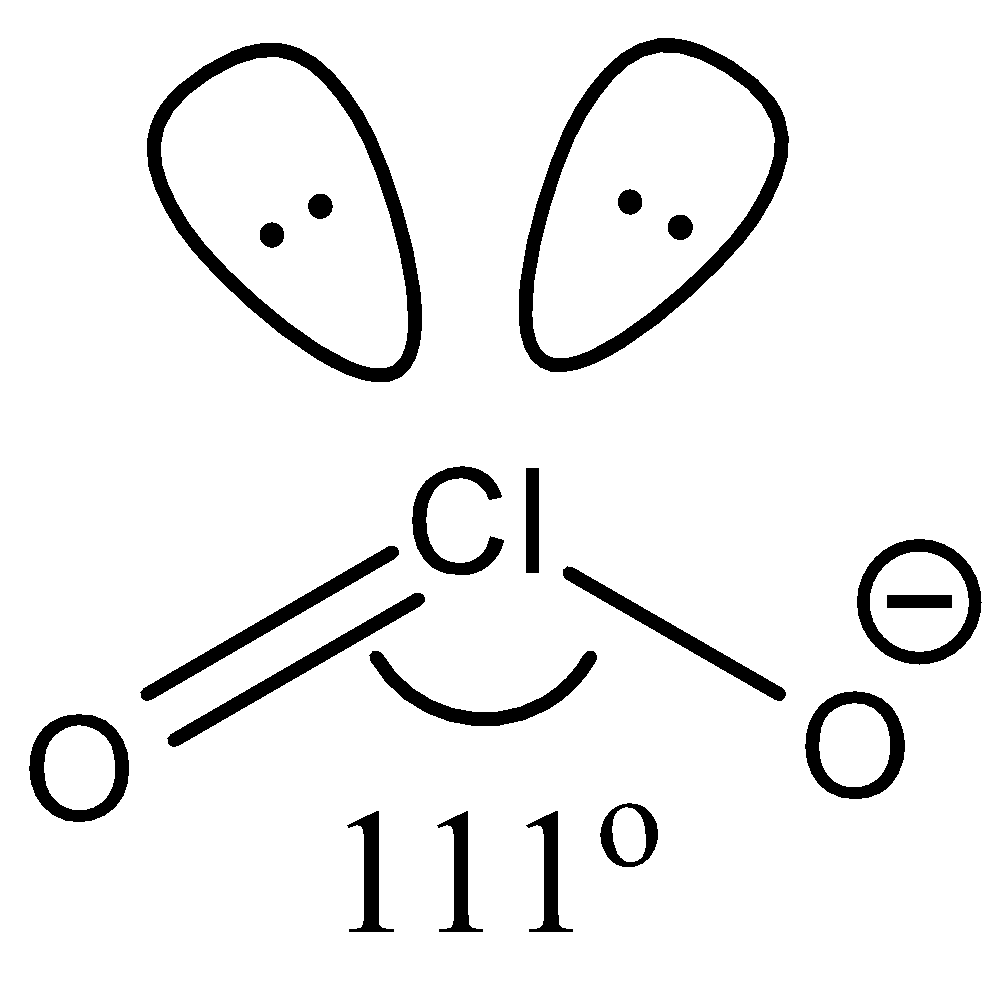Question
Question: What is the bond angle in \(Cl{{O}_{2}}^{-}\) (OClO)? A. \(90{}^\circ \) B. \(120{}^\circ \) C...
What is the bond angle in ClO2− (OClO)?
A. 90∘
B. 120∘
C. 105∘
D. 111∘
Solution
Think about the geometry of the chlorite ion and how the chlorine accommodates the lone pairs and bond pairs. Take into consideration the types of repulsion between lone pairs, bond pairs, double bonds, and charged particles.
Complete step by step solution:
We know that the chlorine atom has 2 lone pairs in the hybridized orbitals, it forms bonds with two oxygen atoms. Thus, the geometry of this molecule will be bent with respect to the atoms involved and tetrahedral with all the atoms as well as lone pairs involved. The structure is as follows:

We know that the bond angle between tetrahedral structures is usually 109.47∘ but taking into account the presence of lone pair repulsion this may change. Here, the repulsion between the lone pairs on the O atoms, the double bonds present and the charge on the O atom is greater than the repulsion between bond pairs. This will lead to an angle that is larger than expected. The repulsion between double bonds has a similar magnitude as that of the repulsion between lone pairs, but the other factors involved overcome this and increase the bond angle.
Hence, the answer is ‘D. 111∘’
Note: Remember that going by superficial information may cause you to go wrong. Just the presence of the lone pairs on the chlorine atom will lead you to believe that the bond angle will decrease from the standard 109.47∘ in tetrahedral structures to 105∘. But other factors should also be taken into consideration. Draw the diagram and analyse it carefully before marking the correct answer.
